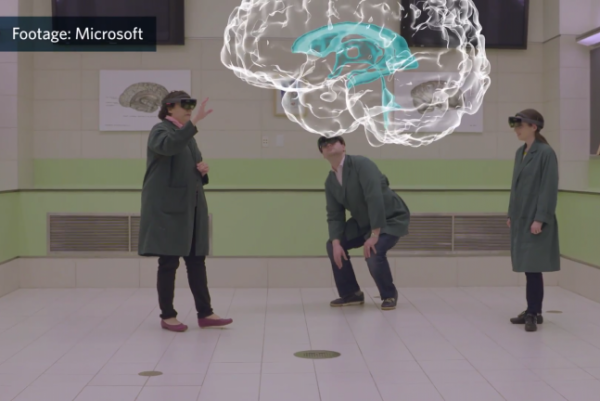HoloBrain
obtained from MRI scans

Background

The gold standard for anatomy instruction involves the use of cadaveric dissection; however, this method is expensive and can be limited by the need to destroy superficial structures in order to reveal deeper ones. As such, there is a clear need for innovative visualizations and educational tools that supplement cadaveric dissection and improve learning outcomes for students in many areas including medicine, physiology, dentistry and biomedicine. With technological advances in computer imaging and display devices, anatomy educators increasingly have a variety of options for delivering educational content. However, there are limitations to these approaches, which include challenges in accurately representing 3D structures, ease of use for instructors and students, as well as an oversimplification or inaccurate information.
Learning with AR
We experience the world in three dimensions, and our visual systems and brains have adapted to processing information in this environment. More conventional screen-based 3D approaches, while an improvement over purely 2D content, still suffer from a loss of dimensional fidelity and a reduction in visual cues, demanding more mental effort – or cognitive load – in order to interpret the image. With AR, the hologram makes the 3D object a natural extension of the physical world, reducing cognitive load, and thus making learning easier.
Development
In collaboration with Microsoft (BigPark Vancouver and Microsoft Garage Interns), an interactive lecture was developed over 4 months using the HoloLens, a mixed reality headset offering the unique ability to blend virtual 3D content with the real world. Specifically, 3D reconstructions of basal ganglia nuclei were obtained from MRI scans and built into the teaching tool deployed on the HoloLens. Taking advantage of the HoloLens gesture recognition input system, interactivity was optimized, allowing the 3D reconstructions to be manipulated with ease and built up separately.
Educational Research
We are currently evaluating the pedagogical efficacy of HoloLens and its application as a teaching tool for undergraduate students, as compared to traditional instructional methods. Specifically, the HoloBrain app will be incorporated into a structured AR lesson that will be used to validate the holographic educational medium as a tool for enhancing students’ understanding of the 3D organization of the brain. The study population will include undergraduate students enrolled in UBC.
The Team
Faculty
- Dr. Claudia Krebs
Students
- Ishan Dixit
- Ratthamnoon Prakitpong
- Ellen He
- Eric Jeong
- Jason Kim
- Juyeong Oh
- Mehrdad Ghomi
- Dante Cerron
- Paige Blummer